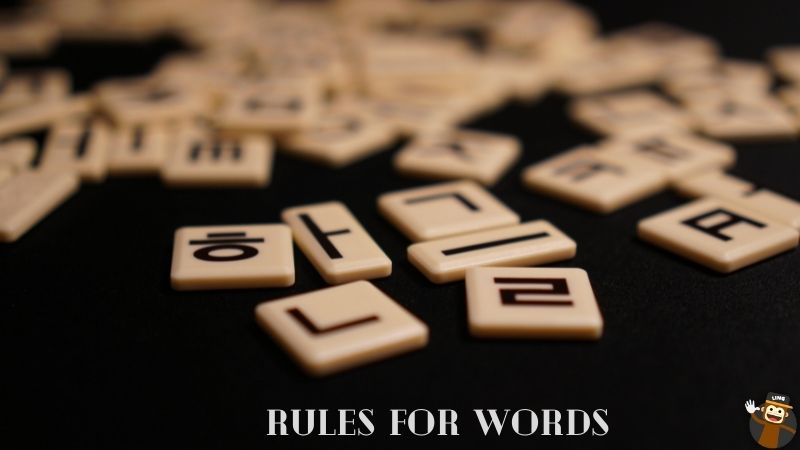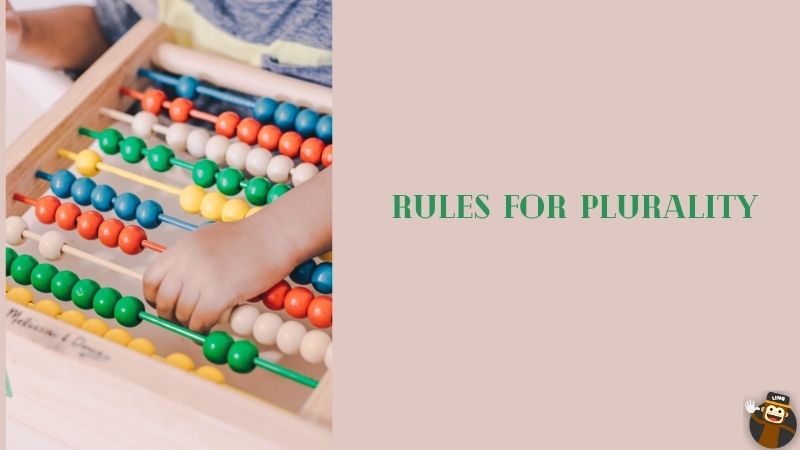Korean grammar rules may seem complicated, but we cannot deny that it is important to learn if you plan to master the Korean language truly. In this article, we will walk you through the basic grammatical rules that can help you construct simple sentences instantly. These rules will guide you at every step since they target almost all aspects of Korean grammar. So let’s get started!
Korean Grammar Rules
While learning Korean grammar, the first question which might pop up in your brain would be, “is learning Korean grammar difficult?”. The answer to your question is “not really… but could be.” Korean grammar is rich, which makes a lot of things to learn, but the main element which makes Korean grammar easy is its regularity.
Most of the rules in Korean are regular, which means that the Korean language does not have as many exceptions as other languages like English or French. If you have grown up learning the English language, then you do not have to think about regular and irregular issues.
For a non-English speaker, learning English becomes very hard. Compared to that, Korean is relatively easy. If you know the Korean alphabet and Korean sentence structure, then Korean grammar knowledge will help you make complex sentences of intermediate level.
Let’s learn basic Korean grammar rules:
Rules For Korean Words

The Korean alphabet is formed using vowels, consonants, and double consonants. It has more complexities, but these are the must-know basics. A block form is used to write words in the Korean language. Every single syllable of a Korean word must have at least one vowel and one consonant to be formed.
The words are formed by writing the consonant and vowel from either top to bottom or left to right. The Korean word 학교 (haggyo) means “school” has both types of block patterns in it.
Rules For Compound Words
The compound words in Korean are formed using some specific patterns in which the words of two similar or different types of words. Let’s look at some very common patterns.
- Noun+noun pattern: 눈+물=눈물 (nun+mul=nunmul) i.e eyes+water=tears.
- Adverb+noun pattern: 곱슬 +머리=곱슬 머리 (gobseul+meoli=gobseul meoli) i.e curly+hair=curly-hair.
- Noun+predicate+nominalizer pattern: 목+걸+이=목걸이 (mog+geol+i=moggeoli) i.e neck+hang+act=necklace.
- Predicate+noun pattern: 지나치게+자다=지나치게 자다 (jinachige+jada=jinachige jada) i.e excessively+sleeping=oversleep.
- Clause + noun: 찬+물=찬물 (chan+mul=chanmul) i.e ice+water=cold-water.
Word Order
The first important rule which needs to be learned before delving into the complexities of Korean grammar is learning the word order. The word order in the Korean language is Subject-object-verb order.
This shows the importance of overall Korean culture on the connections between subject and object. An example of this is 나는 편지를 씁니다 (naneun pyeonjileul sseubnida) which means, “write a letter”.
Subject+Object+Verb Pattern
In the subject-object-verb pattern, the sentence structure is made up of these components only.
- For example, 그들은 해변에서 웃는다 (geudeul-eun haebyeon-eseo usneunda) i.e they laugh at the beach.
- Another example of this will be 의사가 환자를 수술합니다 (uisaga hwanjaleul susulhabnida) i.e (the) doctor operates on (a) patient.
Subject+Noun Pattern
In the subject and noun pattern, the subject is followed by a noun.
- For instance, 나는 선생님이다 (naneun seonsaengnim-ida) i.e “I am a teacher”.
- Another example of this will be 교장은 교사입니다 (gyojang-eun gyosaibnida) meaning “principal is the teacher”.
Subject+Verb Pattern
In a subject-verb pattern, the subject is followed by a Korean verb conjugation in a sentence.
- For example, 고양이가 걷다 (goyang-iga geodda) i.e (the) cat walks.
- Another example will be 개가 짖는다 (gaega jijneunda) i.e (the) dog barks.
Subject+Adjective Pattern
In the subject-adjective pattern, the subject in a sentence is followed by an adjective. Let’s look at some examples.
- 그녀는 이상하다 (geunyeoneun isanghada.) i.e she is weird.
- 그는 우스꽝스럽다 (geuneun useukkwangseuleobda) i.e he is ridiculous.
Rules For Plurality

English has different rules about plurality. To make a word plural in English, we have to learn different regular (adding s and es) and irregular rules. In Korean, you do not have to worry about any of that.
The Korean language is quite flexible in this regard. In Korean, one word suffices for many different meanings. For example, the word 고양이 (goyang-i) is generally used for cat, the cat, a cat, some cats, the cats, and cats.
Some people might argue then what is the particle 들 (deul) used for. 들 (deul) is generally used to make a word plural. However, its use is usually confined to the written form script only. In regular speech, people tend to omit using 들 (deul).
Rules For Nouns
The nouns have certain positioning in a sentence. Let’s learn about some of the most common ways to position a noun.
Look at this sentence. 닥터 마크는 영국 의과대학 학생입니다 (dagteo, makeuneun yeong-gug uigwadaehag hagsaeng-ibnida) means “Doctor, Mark is an English Medical school student.” Given below are the different ways of a noun’s positioning in this sentence:
- By itself: 닥터 (dagteo) i.e doctor.
- Before particles: 마크 (mak) i.e Mark.
- Before another noun: 영국 (yeong-gug) i.e English
- Before copula: 의과대학 학생입니다 (uigwadaehag hagsaeng-ibnida) i.e Medical school student.
Practice Work
Here is a list of some sentences which you can use to practice Korean grammar:
- 수석 송이는 그리스의 심리학자입니다. (suseog song-ineun geuliseuui simlihagjaibnida) i.e Chief, Songyi is a Greek psychologist.
- 선생님, 고양이는 페르시아 고양이입니다. (seonsaengnim, goyang-ineun peleusia goyang-iibnida) i.e Sir, the cat is a Persian cat.
- 리한나 부인은 영국의 가수입니다 (lihanna bu-in-eun yeong-gug-ui gasu-ibnida) i.e Madam, Rihanna is an English singer.
- 서장님, 비고는 외계인 범죄자입니다 (seojangnim, bigoneun oegyein beomjoejaibnida) i.e Chief, Vigo is an alien criminal.
- 레베카, 양이는 한국 배우입니다 (lebeka, yang-ineun hangug baeu-ibnida) i.e Rebecca, yangyi, is a Korean actor.
- 창욱 씨는 한국 배우입니다 (chang-ug ssineun hangug baeu-ibnida) i.e Sir, Changwook is a Korean actor.
Verb Endings
The Korean verbs in Korean grammar are placed at the end. This is why the word order of Korean sentences is the SOV order. All the verbs are added at the end using their proper tenses.
An example of this is 나는 나의 일을 했다 (naneun naui il-eul haessda) which will mean “I have done my work”. However, this literally translates to “I my work have done” which might not make any sense in English but has a perfect grammatical sense in Korean.
Another example of this is 너 좋아해 (neo joh-ahae.) which means I like you. Even in this sentence, the first word is I, and the last word is a verb. This sentence does not have an object which takes us to our next rule. Let’s look at some examples
| Korean Sentences | Romanized Korean | English Translations |
| 나는 내 일을 했다. | naneun nae il-eul haessda. | I did my work. |
| 나는 내 일을 한다. | naneun nae il-eul handa. | I do my work. |
| 나는 나의 일을 했다. | naneun naui il-eul haessda. | I have done my work. |
| 내가 당신을 좋아. | naega dangsin-eul joh-a. | I liked you. |
| 내가 당신을 좋아. | naega dangsin-eul joh-a. | I liked you. |
| 나는 당신을 좋아했습니다. | naneun dangsin-eul joh-ahaessseubnida. | I have liked you. |
| 이 작업을 수행해야 합니다. | i jag-eob-eul suhaenghaeya habnida. | You should do this. |
| 선생님, 이렇게 하셔야 합니다. | seonsaengnim, ileohge hasyeoya habnida. | Sir, you should do this. |
| 나는 외출을 좋아한다. | naneun oechul-eul joh-ahanda. | I like going out. |
| 나는 나가지 않는다. | naneun nagaji anhneunda. | I don’t go out. |
Omission Of Pronouns
The pronouns in the Korean language are often omitted. This is because the context is given importance in the Korean language. Korean people tend to know who is the object of a conversation and therefore omit saying it. For instance, you are an object which is often omitted.
Korean people also exclude the subject in most of the places where the subject is pretty obvious. One example of such a rule could be 학교에 간다 (haggyoe ganda) this means “I go to school” but the literal meaning would be “go to school,” which does not make sense to the English speakers.
Rules For Endings
There are different endings in Korean. You cannot learn Korean grammar rules without learning about the rules of endings. In the Korean language, there are three main types of endings. Let’s learn about each.
- Pre-final endings: placed between the stem and the final ending. The most common way of doing so is placing the honorific suffix -(으)시 (eussi) and past tense marker 었/았 (eo-ss/a-ss) between the stem and final ending.
- Non-sentence-final endings: In the non-sentence ending Korean verb or an adjective the sentence has a verb or adjective as an end. It could also have a conjunctive in the end. Some common conjunctive are 고 (go), -어/아서 (eo/aseo), -으면서 (eumeongseo), -지만 (jiman), -도록 (dorok)
- Sentence-final endings: In the sentence-final endings, a sentence ends properly. For instance, 엄마, 어제 영화 봤어요? (eomma, eoje yeonghwa bwass-eoyo?) i.e “mother, did you watch the movie last night?” The sentence ending 어요 has been used
The sentence-final endings usually depend upon the six speech levels you should know about.
Rules About Speech Levels

In Korean grammar, honorifics are given due importance and there are different types of speech levels which you must know about. That includes the differential, polite, blunt, familiar, plain, and intimate speech. Let’s learn more about these below.
Differential: Differential speech is used in public and/or formal communication settings. The differential level of Korean speech has 습니다/ㅂ니다 (sbnida/bnida) sentence ending for declarative sentences.
Polite: The polite level of speech is used in all situations which demand politeness. Such kind of speech is necessary especially while talking to a high figure authority or someone older than one. The polite level of speech has 어요/아요 (eoyo/ayo) sentence ending for declarative sentences.
Blunt: The blunt level of Korean speech is the one in which the people don’t mind being rude to each other. this could be when the people are either mad at each other or extremely informal. The blunt level of Korean speech has (으)오 (eu)o sentence ending for declarative sentences.
Familiar: The familiar level of Korean speech is used when two people are familiar with each other. The people who know each other tend to use familiar speech with each other. The familiar level of Korean speech has 네 (ne) sentence ending for declarative sentences.
Intimate: The intimate level of Korean is used when two people are extremely close to each other. The intimate level of Korean speech has 어/아 (eo/a) sentence ending for declarative sentences.
Plain: The plain level of the Korean language does not imply anything besides the meaning of the sentences. The plain level of Korean speech has (느)ㄴ다 (neu-nda) sentence ending.
| Declarative | Interrogative | Imperative | Propositive | |
| Deferential | 습니다/ㅂ니다 seubnida/bnida | 습니까/ㅂ니까 seubnikka/bnikka | (으)십시오 (eu)sibsio | (으)십시다 (eu)sibsida |
| Polite | 어요/아요 eoyo/ayo | 어요/아요 eoyo/ayo | 어요/아요 eoyo/ayo | 어요/아요 eoyo/ayo |
| Blunt | (으)오 (eu)o | (으)오 (eu)o | – | – |
| Familiar | 네 ne | 나/는가 na/neunga | 게 ge | 세 se |
| Intimate | 어/아 eo/a | 어/아 eo/a | 어/아 eo/a | 어/아 eo/a |
| Plain | (느)ㄴ다 (neu)nda | (으)니/냐 (eu)ni/nya | 어라/아라 eola/ala | 자 ja |
Rules About Articles
In Korean grammar, there are no articles. Unlike English which has definite articles (the) and indefinite articles (a and an), Korean grammar has words only without any such articles. For instance, “this is a book” will be “이것은 책입니다” (igeos-eun chaeg-ibnida) in Korean, which can be translated to “This is book.”
Another example of this rule will be “this is the person I was telling you about” which will be 이 사람이 내가 당신에게 말했던 사람입니다. (i salam-i naega dangsin-ege malhaessdeon salam-ibnida) which will mean “this is the person I was telling you about.”
Learn More Through The Ling App

Getting access to the Asian languages is usually hard for language learners, but Ling App by Simya Solutions makes that easy for you. Now you can learn all the foreign languages on your checklist in one place. The foreign language you are learning would not sound that foreign to you once you start learning on Ling App. Simple sentences too complicated grammar; everything becomes easy when the sentence structures are explained, and Ling App is especially specialized at that.
So, what are you waiting for? Download the Ling App today and start learning Korean! Happy Learning!


































































